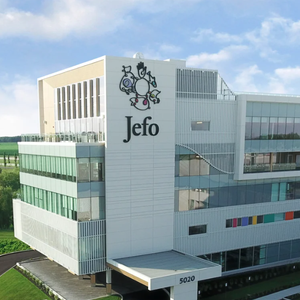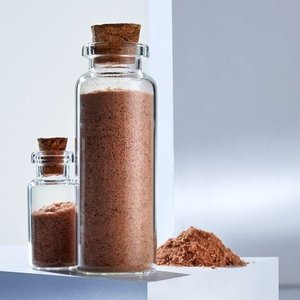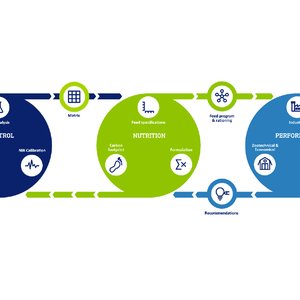“Briefly stated, we are testing whether sea lice infestations can be reduced if the fish are fed using selected Arctic microalgae, which are produced using residual heat and exhaust gas from a smeltery,” explained Nofima researcher Sten Siikavuopio and research director Ragnhild Dragøy Whitaker. “Based on growth data and observations in the nutrition, it is believed that oxylipins from omega-3 work as deterrents to sea lice and other closely related organisms. Algae are primary producers of omega-3.”
In order to carry out the project, plenty of biomass must first be produced from microalgae. The production takes place at Finnfjord Smelteverk, located in the municipality of Lenvik in Troms County, Norway. Alongside regular production of metal for the steel industry, the pre-industrial scale production of microalgae takes place in a reactor that holds up to 300,000 liters.
“When you cultivate microalgae so densely, you need a lot of CO2,” said professor Hans Christian Eilertsen of UiT. “The smeltery gives off a lot of CO2, NOx gases and residual heat, which we utilize to cultivate the microalgae.”
Eilertsen says that the algae population remains completely uncontaminated despite gases being pumped directly from the smeltery and into the algae tank.
Through controlled processing of algae and analysis of fish that have eaten on one of three feed types, researchers are able to control test the effects of the microalgae. The three feed types contain algae oil, fish oil and plant oil.
“While algae and fish oils are rich in marine omega-3, the plant oil contains other fatty acids than marine oils,” said Birthe Vang, Nofima researcher. “Hence, the feed containing plant oil produces other oxylipins that we don’t believe will provide the same protective effect. The research can thus give us answers as to whether it is the marine omega-3 in itself, or something special about the algae oil, that causes the fish to receive substances that function as a sort of “shield” against the lice.”
It is still too early in the project period to conclude whether one feed type or the other works best. However, Eilertsen says that the salmon eat the feed comprised of algae biomass.
“The salmon eat it, and it seems as though they like it very much,” he explained.
The UiT professor sees significant industry potential in utilizing algae oil as fish feed, alternatively as an additional ingredient.
“Considering the high omega-3 content in the algae, and the areas of land that are lost due to the production of for example soy beans, the industry should, in the long term, consider replacing soy with algae.”










